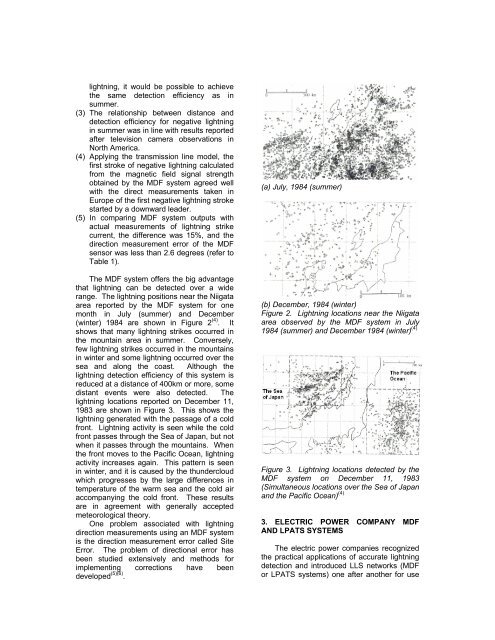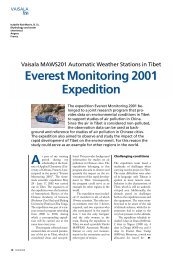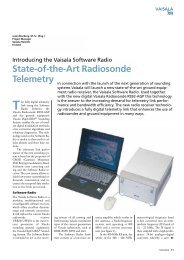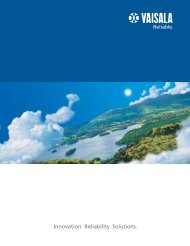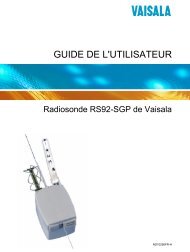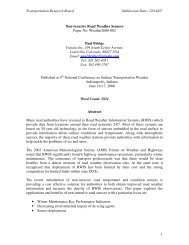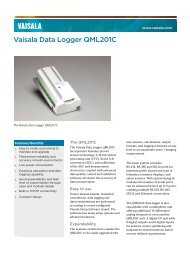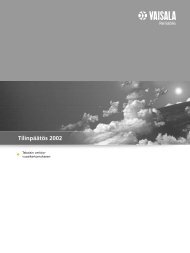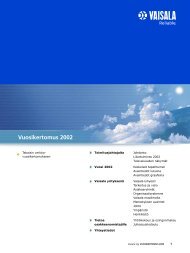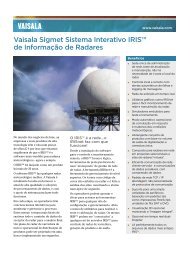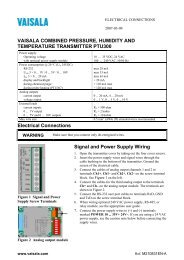LIGHTNING LOCATION SYSTEMS IN JAPAN Fukumune ... - Vaisala
LIGHTNING LOCATION SYSTEMS IN JAPAN Fukumune ... - Vaisala
LIGHTNING LOCATION SYSTEMS IN JAPAN Fukumune ... - Vaisala
Create successful ePaper yourself
Turn your PDF publications into a flip-book with our unique Google optimized e-Paper software.
lightning, it would be possible to achievethe same detection efficiency as insummer.(3) The relationship between distance anddetection efficiency for negative lightningin summer was in line with results reportedafter television camera observations inNorth America.(4) Applying the transmission line model, thefirst stroke of negative lightning calculatedfrom the magnetic field signal strengthobtained by the MDF system agreed wellwith the direct measurements taken inEurope of the first negative lightning strokestarted by a downward leader.(5) In comparing MDF system outputs withactual measurements of lightning strikecurrent, the difference was 15%, and thedirection measurement error of the MDFsensor was less than 2.6 degrees (refer toTable 1).The MDF system offers the big advantagethat lightning can be detected over a widerange. The lightning positions near the Niigataarea reported by the MDF system for onemonth in July (summer) and December(winter) 1984 are shown in Figure 2 (4) . Itshows that many lightning strikes occurred inthe mountain area in summer. Conversely,few lightning strikes occurred in the mountainsin winter and some lightning occurred over thesea and along the coast. Although thelightning detection efficiency of this system isreduced at a distance of 400km or more, somedistant events were also detected. Thelightning locations reported on December 11,1983 are shown in Figure 3. This shows thelightning generated with the passage of a coldfront. Lightning activity is seen while the coldfront passes through the Sea of Japan, but notwhen it passes through the mountains. Whenthe front moves to the Pacific Ocean, lightningactivity increases again. This pattern is seenin winter, and it is caused by the thundercloudwhich progresses by the large differences intemperature of the warm sea and the cold airaccompanying the cold front. These resultsare in agreement with generally acceptedmeteorological theory.One problem associated with lightningdirection measurements using an MDF systemis the direction measurement error called SiteError. The problem of directional error hasbeen studied extensively and methods forimplementing corrections have beendeveloped (5)(6) .(a) July, 1984 (summer)(b) December, 1984 (winter)Figure 2. Lightning locations near the Niigataarea observed by the MDF system in July1984 (summer) and December 1984 (winter) (4)Figure 3. Lightning locations detected by theMDF system on December 11, 1983(Simultaneous locations over the Sea of Japanand the Pacific Ocean) (4)3. ELECTRIC POWER COMPANY MDFAND LPATS <strong>SYSTEMS</strong>The electric power companies recognizedthe practical applications of accurate lightningdetection and introduced LLS networks (MDFor LPATS systems) one after another for use


